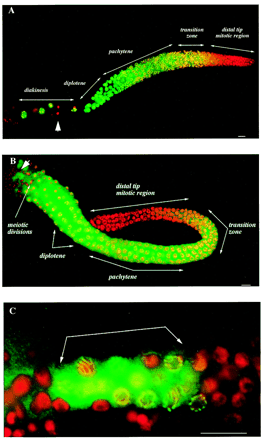C. elegans is a well-established model system ideal for genetic and molecular investigations into biological processes. The complete nematode genome sequence has been available for some time, and powerful in silico techniques have been developed for the prediction of gene function, expression and interaction. Despite the exciting possibilities flowing from predictions of structure/function relationships and the mapping of gene networks, the testing of these predictions relies largely on the existence of efficient reverse genetic approaches that target specific genes or classes of genes in vivo.
Our C. elegans pilot project is a collaboration with Monique Zetka, at McGill University, who has identified a target group of ~100 genes whose RNAi phenotype, expression profile, protein interaction data, or sequence homology has implicated them in genome surveillance, or chromosome segregation.
With assistance from Ann Rose and Nigel O’Neil at UBC, we have generated a library of purified genomic DNA from an EMS-mutagenised population of C. elegans and have demonstrated that the DNA can be used to effectively TILL for mutations in defined genes. We hope that the TILLING population we have generated will allow us to bring this valuable reverse genetic tool to the C. elegans research community in the near future.

